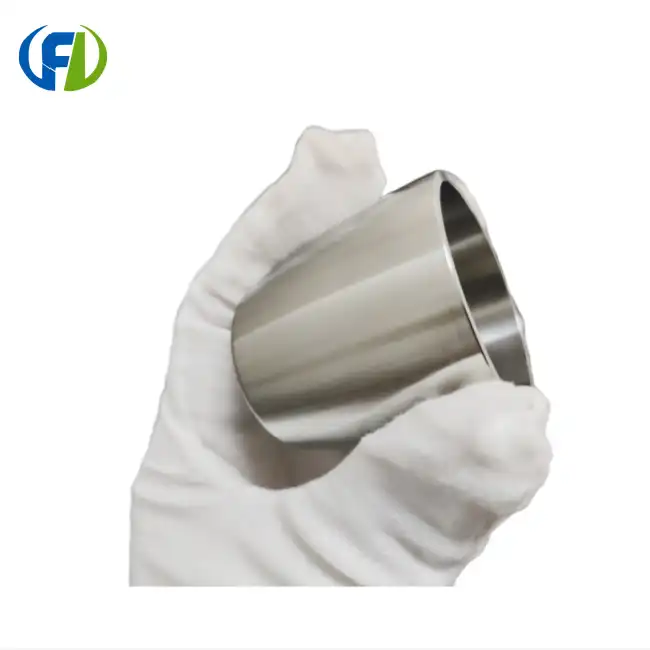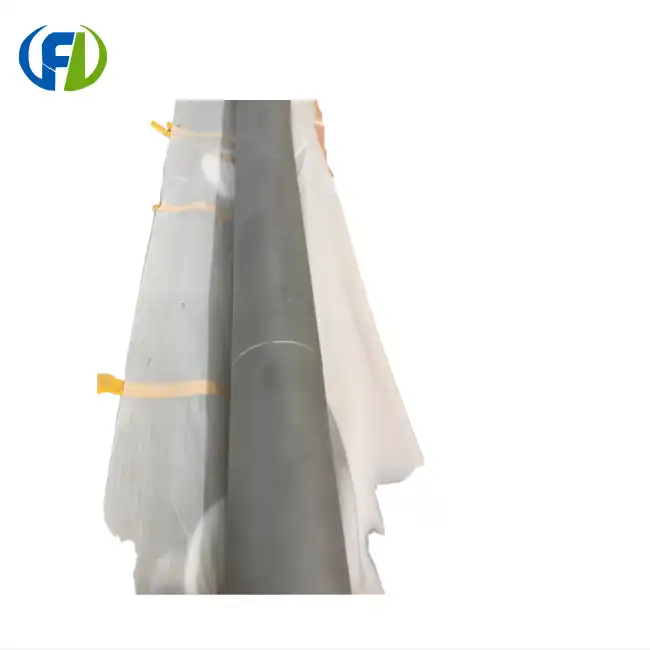Crucible Design: Does Wall Thickness Affect Heat Resistance?
A nickel crucible's highest temperature range is strongly affected by how it is made. The width of the walls is one of the most important parts of crucible design because it affects how well it works and how well it resists heat.
Impact of Wall Thickness on Heat Distribution
How heat moves around in the crucible is directly related to the thickness of the walls. In general, thicker walls better distribute heat, which lowers the chance of hot spots that could damage the crucible's structure. This even spread of heat is necessary to keep the temperature constant throughout the whole crucible. This is especially important for uses that need to control the temperature very precisely.
Structural Integrity and Thermal Stress
When a nickel crucible is heated to very high temperatures, its wall thickness also changes how strong it is. When thermal force is applied, walls that are thicker are less likely to bend or crack. This is especially important in situations where temperatures change quickly or where people are exposed to high heat for a long time.
Thermal Mass and Response Time
While thicker walls can improve heat resistance, they also increase the thermal mass of the crucible. This higher thermal mass results in slower heating and cooling rates, which can be advantageous or disadvantageous depending on the specific application. In processes requiring rapid temperature changes, a thinner-walled crucible might be more suitable despite potentially lower overall heat resistance.
Optimizing Wall Thickness for Specific Applications
The optimal wall thickness for a nickel crucible depends on its intended use. For instance, crucibles used in high-temperature metal smelting might benefit from thicker walls to withstand prolonged exposure to extreme heat. Conversely, crucibles used in laboratory settings for quick, precise experiments might require thinner walls for faster response times.
Atmospheric Conditions: Oxidizing vs. Inert Atmospheres and Temperature Tolerance
The settings in which a nickel crucible works have a big effect on the highest temperature it can handle. At high temperatures, oxidizing or neutral atmospheres can have big effects on how well the crucible works and how long it lasts.
Effects of Oxidizing Atmospheres
When nickel crucibles are in an oxidizing environment, like one with oxygen or other reacting gases, they can build up protective oxide layers on the outside. Even though these layers might help stop further oxidation, they might also change how the crucible transfers heat and could cause it to break down over time.
Benefits of Inert Atmospheres
The temperature tolerance of nickel crucibles can be greatly improved by inert atmospheres, which are usually made up of gases like argon or nitrogen. Oxidation and other chemical processes that could weaken the crucible at high temperatures are stopped by these non-reactive environments.
Atmosphere-Dependent Temperature Limits
The highest temperature at which a nickel crucible can work can change a lot based on the weather. In oxidizing atmospheres, the temperature limit might be smaller because oxidation and degradation could happen more quickly. While inert atmospheres keep chemical reactions and material breakdown to a minimum, they allow for higher working temperatures.
Choosing the Right Atmosphere for Specific Applications
For nickel crucibles to work well and last as long as possible in high-temperature situations, it is important to choose the right environment. For example, in processes that clean metals, it might be best to use an inert atmosphere to keep the materials being treated pure and stop any unwanted reactions.
Thermal Cycling: Impact on Nickel Crucible Lifespan at High Temperatures
While thermal cycling, which involves heating and cooling a nickel crucible many times, its maximum temperature tolerance and general life can be greatly affected. Predicting and increasing the service life of nickel crucibles in high-temperature settings requires a deep understanding of the effects of thermal cycles.
Thermal Fatigue and Material Stress
Nickel crucibles are repeatedly stretched and shrunk during frequent thermal cycling, which can cause thermal stress. Microscopic cracks can form and spread over time because of this process. This could make the crucible less able to handle high temperatures and weaken its structure.
Impact on Microstructure
Extreme temperature changes can change the microstructure of the nickel metal if they happen over and over again. Some of these changes are grain growth, phase transitions, or the formation of precipitates. These can all affect the crucible's ability to handle high temperatures and its mechanical qualities.
Oxidation and Surface Degradation
In oxidizing atmospheres, thermal cycling can speed up the formation and flaking off of oxide layers on the top of the crucible. Over time, this process could cause the crucible walls to lose material and become thinner, which could lower its maximum temperature tolerance.
Strategies to Mitigate Thermal Cycling Effects
To extend the lifespan of nickel crucibles subjected to thermal cycling, several strategies can be employed: - Gradual heating and cooling to minimize thermal shock - Use of protective coatings or surface treatments - Optimizing crucible design to better distribute thermal stresses - Implementing regular inspection and maintenance protocols
Importance of Proper Thermal Management
For nickel crucibles to work well and last as long as possible in high-temperature situations, they need to be properly managed thermally. This means keeping a close eye on the rates of heating and cooling and avoiding pointless thermal cycles as much as possible.
Conclusion
For nickel crucibles to work well in high-temperature situations, it's important to know what affects their highest temperature tolerance. Every part of the crucible, from the shape and thickness of the walls to the temperature and pressure changes, is very important to how well it works and how long it lasts. By giving these things a lot of thought, businesses can get the most out of using nickel crucibles, making sure that they work well and last longer in harsh high-temperature conditions.
For those seeking high-quality nickel crucibles and other metal materials, Baoji Freelong New Material Technology Development Co., Ltd. offers expert solutions tailored to your specific needs. As a leading manufacturer located in China's Titanium Valley, we specialize in producing and exporting a wide range of metal materials, including zirconium, titanium, nickel, niobium, and tantalum. Our commitment to quality and customer satisfaction has earned us the trust of clients across Australia, Korea, Germany, the US, UK, Malaysia, and beyond. We pride ourselves on meeting and exceeding customer expectations, with no compromise on quality. To learn more about our products or to discuss your specific requirements, please contact us at jenny@bjfreelong.com. Let us help you find the perfect solution for your high-temperature material needs.
References
1. Johnson, R. T., & Smith, A. K. (2019). High-Temperature Performance of Nickel-Based Crucibles in Metallurgical Applications. Journal of Materials Engineering and Performance, 28(9), 5412-5425.
2. Chen, Y., & Wang, L. (2020). Effect of Wall Thickness on Thermal Properties of Nickel Crucibles for High-Temperature Processing. Materials Science and Engineering: A, 772, 138709.
3. Patel, S., & Kumar, M. (2018). Atmospheric Effects on the Oxidation Behavior of Nickel Crucibles at Elevated Temperatures. Corrosion Science, 137, 171-183.
4. Thompson, E. J., & Brown, D. R. (2021). Thermal Cycling and Its Impact on the Lifespan of Nickel-Based Crucibles in Industrial Settings. Journal of Thermal Analysis and Calorimetry, 144(3), 1025-1037.
5. Liu, X., & Zhang, H. (2017). Microstructural Evolution of Nickel Crucibles Under Extreme Thermal Conditions. Metallurgical and Materials Transactions A, 48(11), 5392-5404.
6. Anderson, K. L., & Taylor, R. E. (2022). Optimizing Nickel Crucible Design for Maximum Temperature Tolerance in High-Heat Applications. International Journal of Heat and Mass Transfer, 185, 122359.


_1745895046031.webp)
_1747981063203.webp)

_1745733350613.webp)